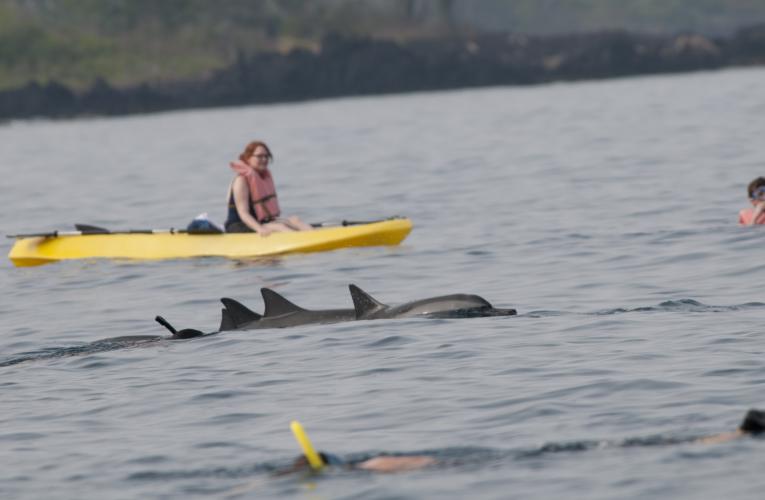DURHAM, N.C. – The wild-dolphin industry generates more than $100 million a year in eco-tourism revenue in Hawaii but has led to concerns that the daily tide of tourists looking to view or swim with the state’s most charismatic marine mammals – spinner dolphins – is placing the animals, who rest during the day, at risk.
A new study by scientists at the University of Hawaii at Manoa, the Duke University Marine Lab and York University provides guidance for policymakers and tour operators looking to maintain this vital source of revenue while protecting the animals that generate it.
It finds that dolphin-viewing tours are more profitable than tours where customers can swim with the animals – a much more disruptive option that can deprive spinner dolphins of rest and inhibit their ability to avoid predators while foraging in nearby waters at night.
The team’s peer-reviewed study was published Aug. 13 in the journal Frontiers of Marine Science.
“What surprised us was the study showed that dolphin-viewing companies are making a larger profit than dolphin-swim businesses by an estimated $19 million per year,” said Carlie Wiener of the Schmidt Ocean Institute, who was lead author of the study.
David Johnston, associate professor of the practice of marine conservation ecology at the Duke Marine Lab, co-authored the study, which estimated revenue generated from two popular locations, Waiʻanae on the island of Oahu, and Kailua-Kona on Hawaii Island.
Johnston said that knowing that dolphin-viewing generates more revenue than swim-with-dolphin tours can help tourism operators plan for future growth and avoid unnecessary economic risks at a time when Hawaii’s state policymakers are considering new regulations aimed at reducing impacts on the dolphins, which bring in more than $100 million a year in tourism revenue.
“This study shows that an individual spinner dolphin can generate an estimated $3,364,316 in tourism revenue over its lifetime,” he said. “That certainly provides a compelling reason to protect them.”
Citation: “Cashing in on Spinners: Revenue Estimates of Wild Dolphin-Swim Tourism in the Hawaiian Islands,” Carlie Wiener, Lars Bejder, David Johnston, Leesa Fawcett and Paul Wilkinson; Aug. 13, 2020, Frontiers in Marine Science. DOI: 10.3389/fmars.2020.00660
###



